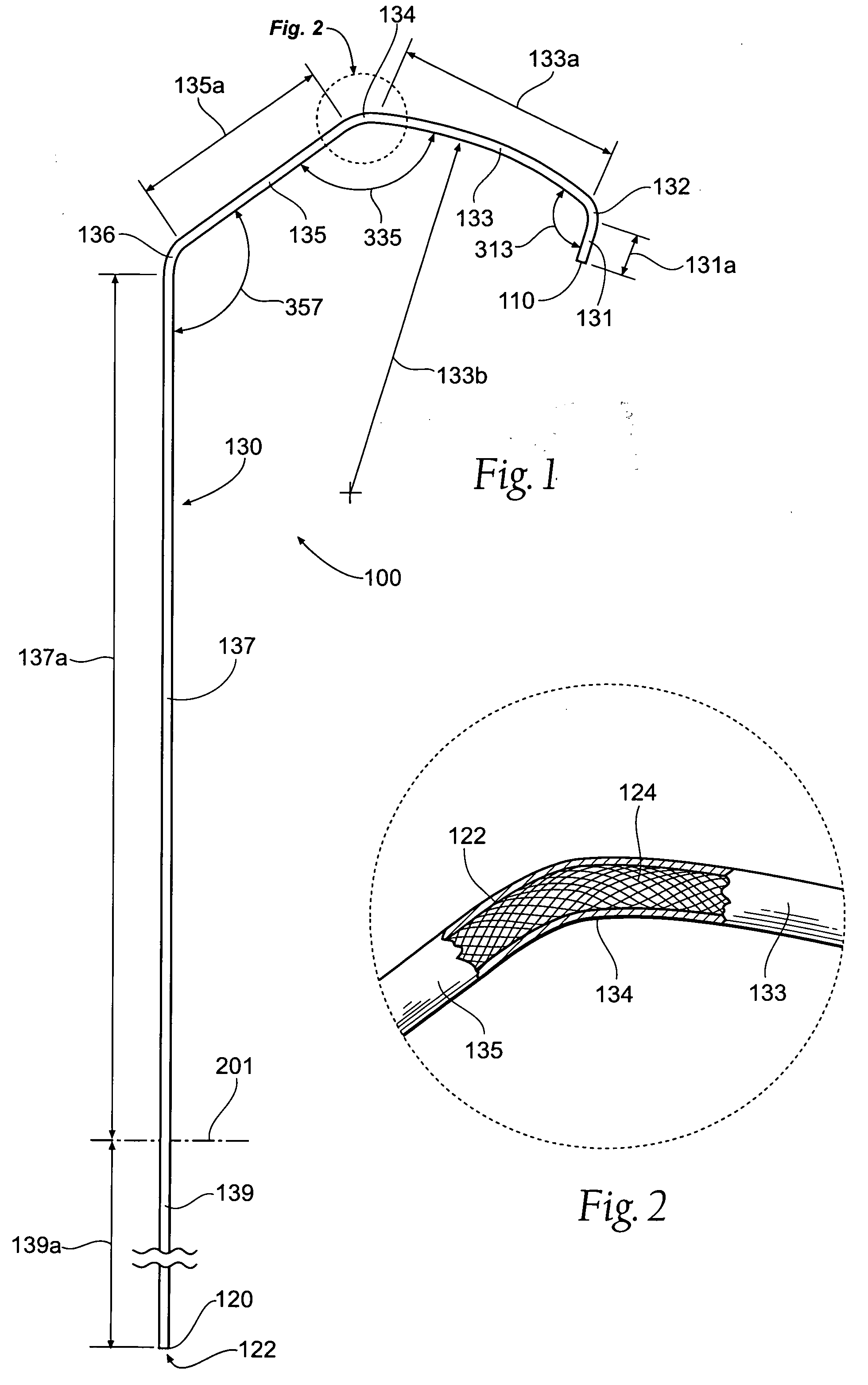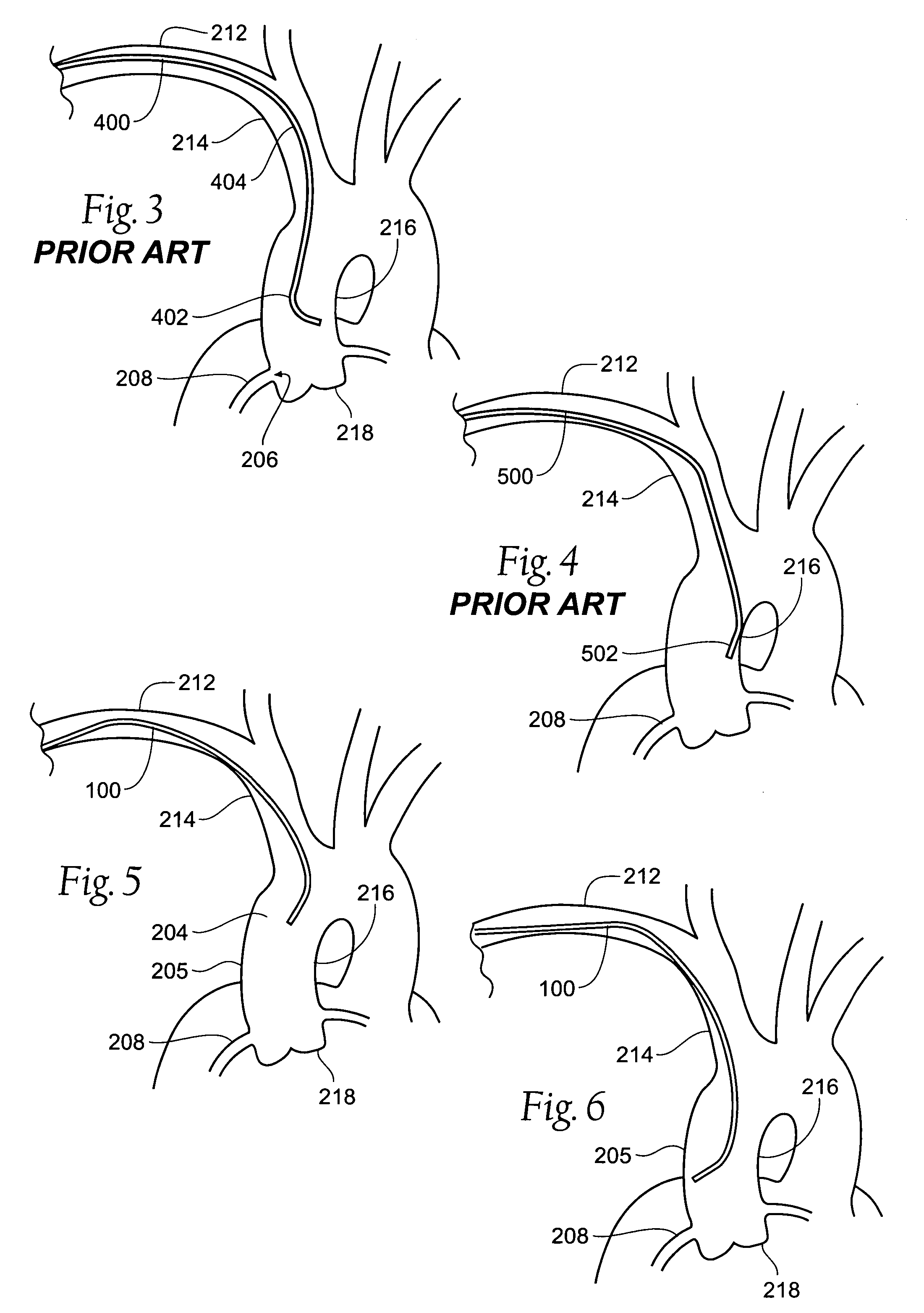Transradial coronary catheter
a catheter and transverse technology, applied in the field of catheters, can solve the problems of increasing vascular complications, especially difficult procedures, and disengagement of the catheter from the ostium of the artery, and achieve the effects of improving the support against the back-up force of the cephalad, improving the directionality of the catheter, and adding torque or stiffness
- Summary
- Abstract
- Description
- Claims
- Application Information
AI Technical Summary
Benefits of technology
Problems solved by technology
Method used
Image
Examples
Embodiment Construction
[0004]Although the disclosure hereof is detailed and exact to enable those skilled in the art to practice the invention, the physical embodiments herein disclosed merely exemplify the invention which may be embodied in other specific structures. While the preferred embodiment has been described, the details may be changed without departing from the invention, which is defined by the claims. P Turning now to the figures, FIG. 1 provides an embodiment 100 of a right transradial catheter according to the present invention. The embodiment 100 includes a distal end 110 a proximal end 120, and a tubular body 130 extending therebetween. The body 130 has a lumen 122 formed therethrough, which is accessible from the proximal end 110, the distal end 120, or both. The body 130 preferably has five body segments extending from the distal end 110 to the proximal end 120. The segments preferably include a tip 131, a cephalic segment 133, a subclavian segment 135, an arm segment 137, and a diagnost...
PUM
 Login to View More
Login to View More Abstract
Description
Claims
Application Information
 Login to View More
Login to View More - R&D
- Intellectual Property
- Life Sciences
- Materials
- Tech Scout
- Unparalleled Data Quality
- Higher Quality Content
- 60% Fewer Hallucinations
Browse by: Latest US Patents, China's latest patents, Technical Efficacy Thesaurus, Application Domain, Technology Topic, Popular Technical Reports.
© 2025 PatSnap. All rights reserved.Legal|Privacy policy|Modern Slavery Act Transparency Statement|Sitemap|About US| Contact US: help@patsnap.com



